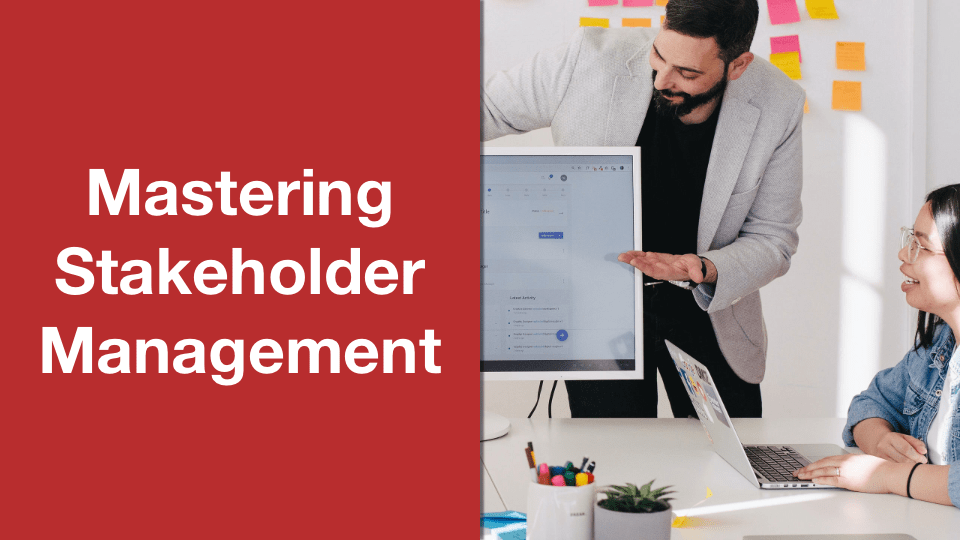Your first stakeholder meeting, with any stakeholder, is the beginning of the beginning. The start, you hope of a productive relationship. It may be you can do all you need in a short series of meetings and move on, perhaps keeping in touch from time to time.
But, with many stakeholders your first meeting will set the tone for a relationship that, you expect, will bring value to both parties. So, let’s assume you’ve secured, prepared for and then nailed the delivery of your first EBR. What’s next?
Over the final part of this guide we’ll cover the 4 essential elements of building a long term, sustaining relationship that happen between the actual meetings or conversations:
- Setting up keeping in contact
- Following up like a boss
- Making checking in a superpower
- Managing change in the stakeholder landscape
Setting Up Keeping In Contact
What are the critical steps to take at the end of a stakeholder meeting that set you up to keep in touch with the expectation of future meetings? First thing to note, the end of the meeting, when you are face to face with stakeholder is the time to make plans. Don’t be tempted to put it off with a casual “I’ll drop you a line with next steps”. Get the commitment then and there.
First of all summarise the meeting, the key agreements reached, open points that still require agreement and the next steps agreed during the course of the discussion. Indicate that you’ll issue a written summary confirming what you’ve just said and had agreed.
Second, close out the open points by agreeing a plan that leads to additional next steps you agree and add to your running list.
Quickly work through the next steps. Make sure an owner is identified for every next step. If you need to be put in touch ask the stakeholder to do that as soon as they can. Where you can get commitment to dates.
Based on what you’ve just discussed propose the next meeting. It might be, if you are in an EBR, that there’s no need to meet again until 3, 6, 12 months have passed when the next EBR is due. But if you’re working a set of actions then based on the dates you’ve agreed set a next meeting at a time that would be appropriate to get together to continue to drive these forward. If you’ve just confirmed a set of actions, owners and dates then proposing a next discussion aligned to them is a sure fire way to get agreement to that next conversation.
This might seem like a lot to keep track of. If it does, make sure you go into your meeting with a simple way to make the notes you need. You can refer to this when you summarise the meeting and use it to ensure everything is captured. As a bonus you look like you mean business.
Following Up Like A Boss
Following up like a boss means do one thing, very well. What’s that one thing?
It’s everything you said you’d do plus a little extra. Most people are too busy or sometimes too dis-organised even sometimes too lazy to get to everything they said they would do. So by doing that, promptly, accurately and effectively you’ll already stand out. Add in a couple of bonus items (for example send over a paper you’ve found that’d directly relevant to your last or next discussion) and you’ll move well ahead of the crowd.
And when we say do everything, that means get it done. It doesn’t mean have a go and turn up to the next with a bunch of excuses. It means find a way to get it done.
Make Checking In A Superpower
There is a simple rule – only check in with added value. Your customers are likely busy people, if you call just to say hello and how are you getting on, you won’t achieve much. They might like the thought with the first one but not regularly.
A quick check-in with a customer will be a better conversation when you have a reason: an easy to describe customer benefit, an update on resolving an issue, news about a desired new feature, or a great new best practice driving value elsewhere.
These check-ins should be determined by the reason not by a schedule. This can be hard but can be helped by having your product designed with customer value in mind. If, for example, your product can alert you to the usage of your product by customers and highlight to you where they could get more value this will truly allow you to make checking-in a superpower.
Managing Change In The Landscape
Having worked hard to get, execute and maintain your stakeholder relationships, you need a plan to ensure the departure of a stakeholder doesn’t derail your relationship with your customers. The key to this plan will come as no surprise to you, it involves proving the value you create for your customer. If your Owner leaves your customer, getting an opportunity to meet with the replacement will be easier if you are delivering value. You’ll be much more likely to be connected onward to the next stakeholder allowing you to have an early strategic conversation with them on their plans.
Conversely if you either can’t prove or aren’t providing value even if you get the meeting, it’ll be much harder to maintain that relationship subsequently. The new stakeholders is much less likely to have the interest.
The key of course is to act quickly if you are surprised by a change, by having a plan in place for this situation that allows you the best chance to quickly establish the new relationship. Even better, if you are checking in regularly with value at the heart of the discussion there’s a great chance you’ll hear about the change from your existing stakeholder long before it happens.
And don’t forget the departing stakeholder. Maintaining a relationship with them could prove very valuable in the long term.



